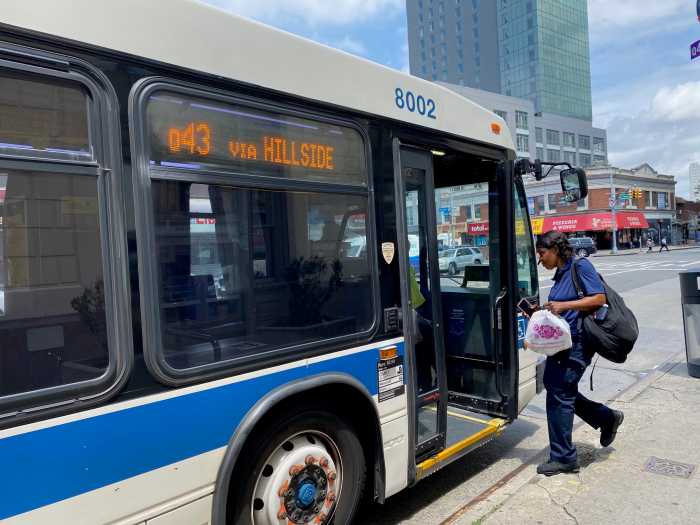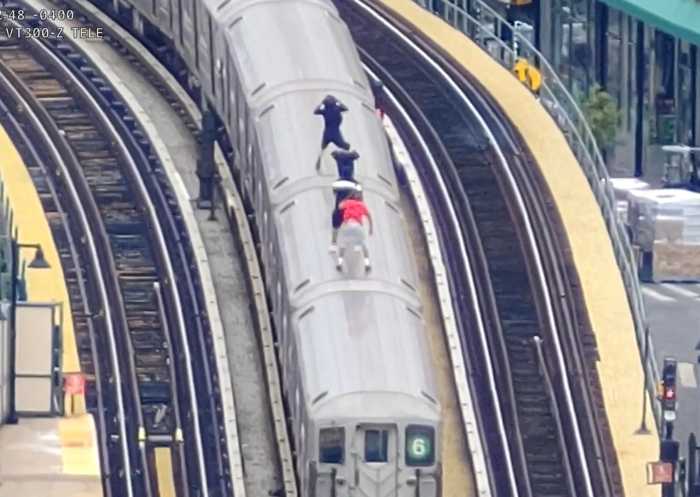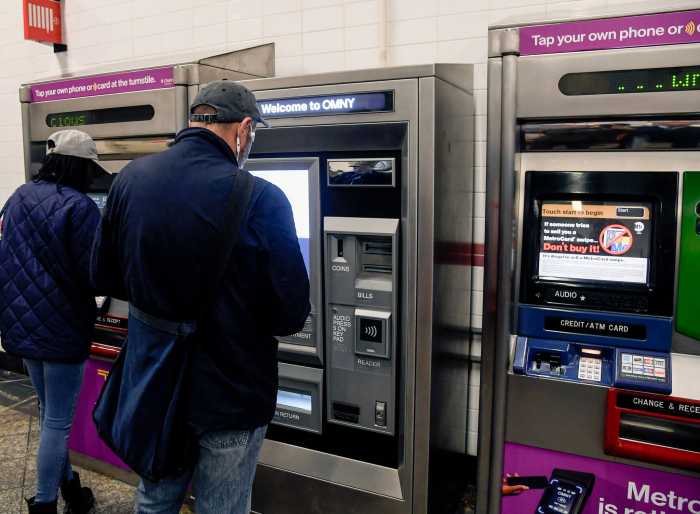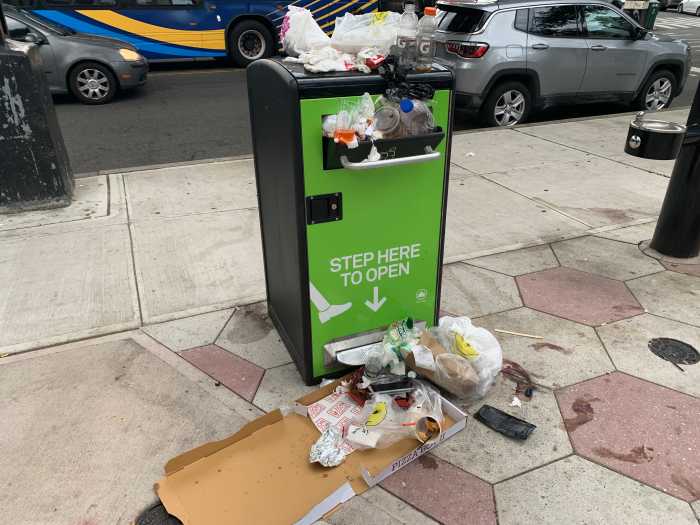
More than 100 cyclists took to the streets of Queens Sunday for a Women’s Ride organized to highlight the gender gap in the city’s cycling community while also advocating for the continuation of bike lanes along Queens Boulevard.
Joelle Galatan, 17, of Bayside, Queens, helped organize the roughly 7-mile ride with Transportation Alternatives and other groups to help women feel “empowered” to ride in a city where men account for 65 percent of cyclists, according to a city report published last year. Wearing a knitted pink “Pussy Hat” over her helmet and a cycling jersey depicting Rosie the Riveter, Galatan attributed that imbalance partly to harassment, like catcalling while out on rides, or “mansplaining” at bike shops.
“As a woman being a cyclist, there’s a lot of gender discrimination that you get that men just don’t get,” said Galatan. “Women should feel strong; they should feel powerful; they should feel like they have the power within themselves to ride.”
The ride, inspired by Women’s Marches that have been staged across the country, welcomed girls and gender nonconforming riders to join in the brisk, early-spring tour winding 7 miles from Queensbridge Park Greenway in Long Island City to Queens Plaza North, then onto Queens Boulevard toward the Women’s Plaza at Queens Borough Hall where a rally was planned to cap off the day’s events.
Organizers chose Queens Boulevard for the ride in order to showcase the connection between the gender gap in New York City cycling communities and street safety, said Laura Shepard, a member of Transportation Alternatives’ Queens Volunteer Committee.
“One of the many barriers for people is safety of the roads,” she added. “When we remove these barriers a lot more people ride, including more women, older people, younger people — not just the stereotypical road warrior.”
As cycling popularity has boomed in New York over the past two decades, women have remained underrepresented. A 2015 report from the Rudin Center for Transportation Policy and Management at New York University pointed to another potential reason for the discrepancy: unsafe bicycle infrastructure.
The report found that women are more likely to ride in areas that are connected to bike lanes or greenways, separated from traffic. They also tend to ride on more residential streets, like those in Brooklyn, with lower traffic volumes and on streets that tend to have fewer cyclist injuries, when compared to trips taken by men, according to the report.
Another rider, Karen Overton, the director of Recycle-A-Bicycle at Bike New York, said the misrepresentation among riders can’t be traced to one or two issues. She pointed out that women are more often taking family-oriented trips where they’d have to carry more. And cargo bikes aren’t necessarily affordable or popular in New York.
Overton helped a few young women from Forest Hills High School’s bike club build their own bikes from the frame up ahead of the event, so that the students could ride them for the first time on Sunday.
“It’s a complex answer — not all women are alike,” Overton said, on the number of women riders in the city. “When I started riding I would only take trips within a 10-mile radius because I didn’t know how to fix my bike and I didn’t want to get stranded. So for me, teaching the mechanics is really important.”
According to Shepard, many girls over the age of 7 or as teenagers don’t own a bike, because it’s “just kind of not encouraged or we’re told to be careful a lot more often,” she said.
“We also sometimes deal with some street harassment or road rage — which happens to all cyclists — but it’s something that we want to highlight as a reason why there is this gender gap,” she said.
Once known as the “Boulevard of Death,” the 3.8-mile section of Queens Boulevard that has been transformed under Mayor Bill de Blasio’s Vision Zero initiative has not had a single traffic fatality in the last three years.
The administration has thus far brought dedicated bike lanes, crosswalk improvements and other pedestrian-focused remediation to sections of Queens Boulevard in Woodside, Elmhurst, Rego Park and Forest Hills. The next phase of work would extend from Yellowstone Boulevard, where the improvements currently end, to Union Turnpike.
Meghan Woods, an Astoria resident in her mid-30s, had taken part in small group rides on Queens Boulevard, maybe a decade ago, when Transportation Alternatives was still pushing for bike lanes on the boulevard.
“It was a difficult route and I couldn’t imagine people riding it by themselves. But the boulevard is the quickest way to get from A to B,” Woods said. “It’s taken a really long time . . . so exciting to actually ride now on bike lanes on Queens Boulevard.”



































